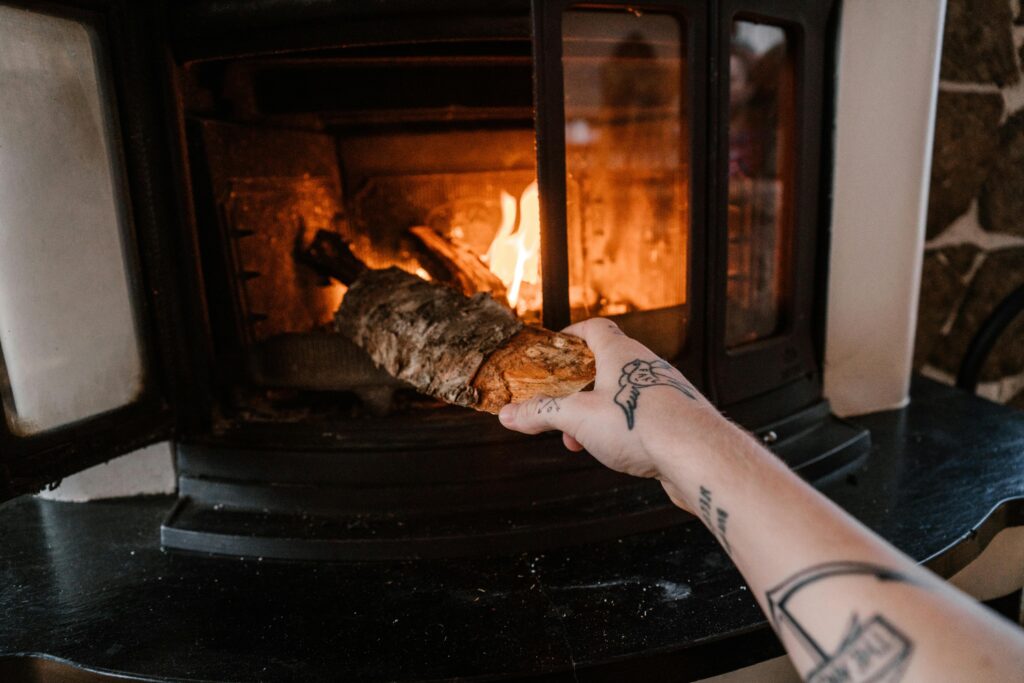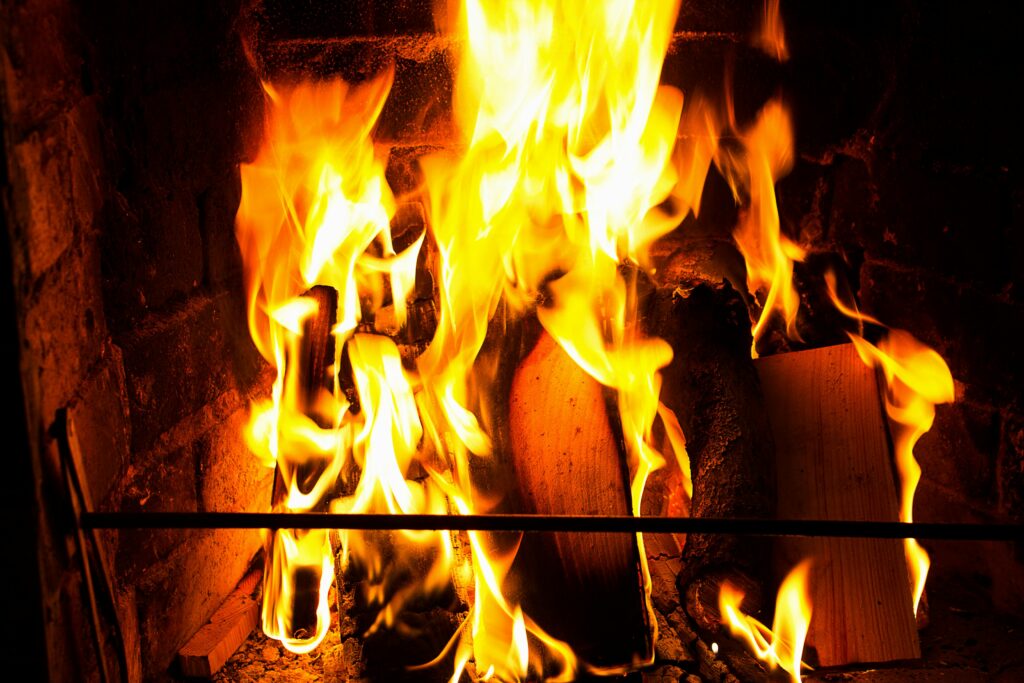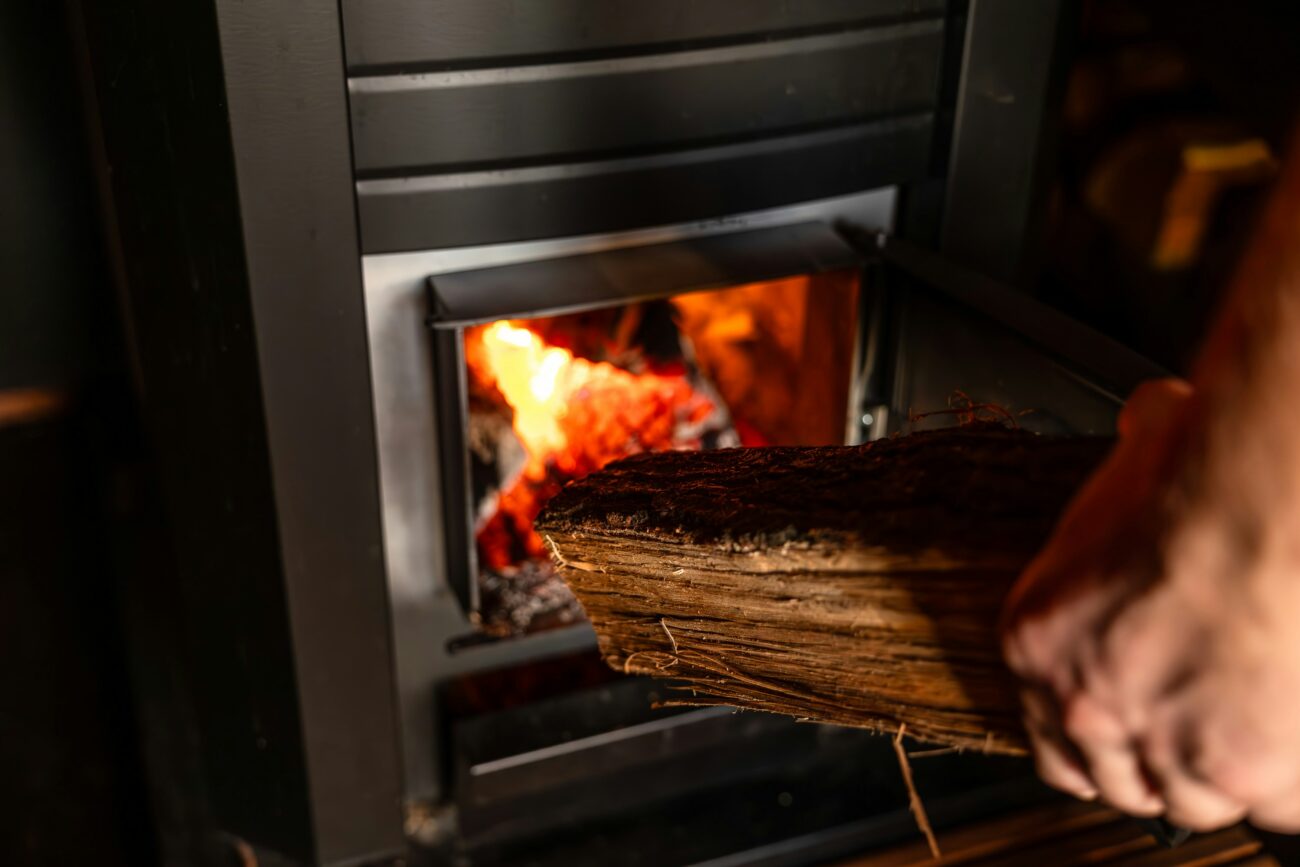Nothing ruins a cozy evening faster than a wood stove smoking into room instead of drawing properly up the chimney. If you’re dealing with this frustrating problem, you’re not alone. After 15 years of installing and servicing wood stoves, I’ve seen every possible cause of indoor smoke issues – and more importantly, I know exactly how to fix them.
Wood stove smoking into room is one of the most common complaints I receive from homeowners, especially during the first cold snap of the season. The good news? Most smoking problems have straightforward solutions once you understand what’s causing them.
Understanding Why Wood Stoves Smoke Into Rooms
When your wood stove smoking into room occurs, it’s always due to poor draft – the natural upward flow of air that should carry smoke up your chimney. Think of your wood burning system as a balanced equation: air comes in through the stove’s air intake, combustion occurs, and exhaust gases (including smoke) should exit through the chimney.
Several factors can disrupt this balance, causing wood stove smoke problems that send toxic fumes into your living space instead of safely outside.
The Top 7 Causes of Wood Stove Smoking Into Room

1. Cold Chimney Syndrome
The most frequent cause of wood stove smoking into room happens when your chimney is too cold to establish proper draft. Cold air is denser than warm air, so a cold chimney actually pushes air downward instead of drawing smoke up.
The Fix: Before lighting your main fire, warm your chimney by burning newspaper or kindling at the base of the flue. Hold the burning paper near the damper opening for 30-60 seconds until you feel the draft reverse and start pulling upward.
2. Blocked or Restricted Chimney
Creosote buildup, bird nests, or debris can significantly reduce your chimney’s ability to draw smoke effectively. Even a partial blockage can cause wood stove smoking into room, especially when combined with other factors.
The Fix: Have your chimney professionally cleaned at least once per year. If you burn more than 3 cords annually, consider twice-yearly cleaning. You can also perform a visual inspection using a flashlight – if you can’t see daylight from the bottom looking up, you likely have a blockage.
3. Inadequate Chimney Height
Your chimney needs sufficient height to create proper draft. The general rule is your chimney should extend at least 3 feet above the roof line and 2 feet higher than any roof point within 10 feet horizontally.
The Fix: If your chimney is too short, you’ll need to add chimney pipe sections. This is definitely a job for professionals, as improper installation can create serious safety hazards.
4. Negative Air Pressure in Your Home
Modern homes are built tight for energy efficiency, but this can create negative pressure that fights against your chimney’s natural draft. When exhaust fans, furnaces, or other appliances pull air from your home, they can literally suck smoke back down through your wood stove.
The Fix: Crack a window near your wood stove when starting fires. Many experienced wood burners install outside air kits that provide combustion air directly from outdoors, eliminating competition with other appliances.
5. Using Wet or Green Wood
Burning wood with high moisture content creates excessive smoke and lower combustion temperatures. This cool, heavy smoke struggles to rise up your chimney, often resulting in wood stove smoking into room.
The Fix: Only burn properly seasoned hardwood with moisture content below 20%. Wood should be split and dried for at least 6-12 months. Invest in a moisture meter – it’s the only reliable way to ensure your wood is ready to burn.
6. Damper Problems
A partially closed damper or a warped damper plate can severely restrict smoke flow, causing wood stove smoking into room even when other conditions are perfect.
The Fix: Ensure your damper opens fully before each use. If the damper is warped or damaged, it needs professional replacement. Never operate your wood stove with a closed or partially closed damper.
7. Improper Fire Building Technique
How you build and start your fire directly impacts smoke production and draft establishment. Too much wood too quickly can overwhelm your chimney’s capacity, while insufficient kindling fails to create the heat needed for proper draft.
The Fix: Use the top-down fire building method: place larger logs on the bottom, medium wood in the middle, and kindling on top. This creates a more controlled burn that establishes draft gradually.
Advanced Troubleshooting for Persistent Wood Stove Smoke Problems

Wind and Weather Factors
Certain weather conditions can cause temporary wood stove smoking into room. High winds can create downdrafts, while atmospheric pressure changes affect chimney performance.
If smoking only occurs during specific weather patterns, consider installing a chimney cap with wind-resistant design or a rotating chimney cowl that adjusts to wind direction.
Chimney and Stove Sizing Issues
An oversized chimney relative to your wood stove can fail to maintain adequate temperatures for consistent draft. Conversely, an undersized chimney can’t handle your stove’s smoke volume.
The ideal flue size should match your stove’s outlet diameter. If there’s a significant mismatch, you may need professional consultation about liner installation or stove replacement.
Structural Issues Affecting Draft
Nearby trees, buildings, or even roof additions can create wind patterns that interfere with chimney draft. The “stack effect” that drives natural draft can be disrupted by these obstacles.
Sometimes the solution involves extending chimney height, installing a different cap style, or in extreme cases, relocating the chimney or stove.
Prevention: Stopping Wood Stove Smoking Before It Starts

Regular Maintenance Schedule
Create a maintenance routine that prevents most wood stove smoking into room problems:
Monthly during burning season:
- Check and clean glass doors
- Inspect door gaskets for proper seal
- Remove ash buildup (but leave 1-inch base for insulation)
Annually before heating season:
- Professional chimney cleaning and inspection, don’t miss our detailed guide about How to Clean Wood Stove Chimney Yourself
- Check chimney cap and spark arrestor
- Test damper operation
- Inspect stove pipe connections
Quality Wood Storage and Selection
Proper wood storage prevents moisture problems that lead to smoking issues. Store wood off the ground, covered on top but with sides exposed for air circulation. Stack wood loosely to promote drying.
Choose hardwoods like oak, maple, or hickory over softwoods when possible. Hardwoods burn hotter and cleaner, producing less smoke and creosote.
Understanding Your Specific Setup
Every wood burning installation is unique. Learn your system’s characteristics: how long it takes to establish draft, which weather conditions cause problems, and what techniques work best for your specific stove and chimney combination.
Keep a log of when smoking problems occur – patterns often reveal the underlying cause.
When to Call Professionals
While many wood stove smoking into room problems have DIY solutions, some situations require professional intervention:
- Persistent smoking despite trying multiple solutions
- Visible chimney damage or deterioration
- Carbon monoxide detector activation
- Smoke staining around stove or chimney connections
- Any uncertainty about safety procedures
Professional chimney sweeps have specialized tools and experience to diagnose complex draft problems and ensure your system operates safely.
Safety Considerations for Wood Stove Smoke Issues
Never ignore wood stove smoking into room – it poses serious health and safety risks. Smoke contains carbon monoxide, particulates, and other toxic compounds that can cause immediate and long-term health problems.
Install carbon monoxide detectors on every level of your home, especially near sleeping areas. Test batteries monthly and replace detectors according to manufacturer recommendations.
If you experience persistent smoking problems, use alternative heating until the issue is resolved. The convenience of wood heat never justifies compromising your family’s safety.
Conclusion: Mastering Your Wood Stove’s Performance
Solving wood stove smoking into room problems requires understanding the physics of draft, maintaining your system properly, and using correct burning techniques. Most homeowners can eliminate smoking issues by addressing the common causes outlined in this guide.
Remember that consistent performance comes from consistent habits: burning only dry wood, maintaining proper airflow, keeping your chimney clean, and understanding how weather affects your system.
With proper knowledge and maintenance, your wood stove should provide years of reliable, smoke-free heating. The investment in solving smoking problems pays dividends in safety, comfort, and heating efficiency.
Take action on these solutions systematically, starting with the most common causes. Most wood stove smoking into room problems resolve quickly once you identify and address the root cause. Your warm, cozy, smoke-free evenings are worth the effort.

